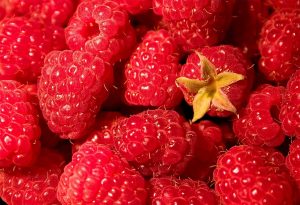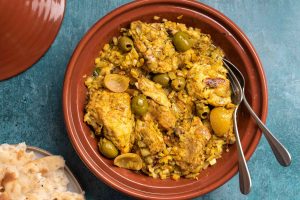
33 interesting facts about Flan
- 👁️ 1359
Flan, a creamy, caramel-topped custard dessert, enjoys popularity in various forms around the world. Its origins can be traced back to ancient Rome, but it has been embraced and adapted by many cultures, each adding its unique twist to the recipe. Typically made from eggs, milk, and sugar, flan is celebrated for its rich flavor and velvety texture, making it a favorite among dessert lovers. Whether served at family gatherings, festive celebrations, or as a sweet treat to end a meal, flan’s universal appeal transcends borders. Let’s explore some interesting and informative facts about this beloved dessert.
- The word “flan” is derived from the Latin word “flado,” meaning flat cake.
- Flan was originally a savory dish in ancient Rome before evolving into a sweet custard.
- The Romans are credited with spreading flan throughout Europe as their empire expanded.
- In medieval times, flan was often made with meat and served as a main course.
- The Spanish version of flan, known as “flan de leche,” emphasizes a caramel sauce topping.
- Mexican flan incorporates local flavors like vanilla and cinnamon, distinguishing it from its European counterparts.
- In the Philippines, flan is known as “leche flan” and is typically denser and richer than other varieties.
- The caramel topping is made by caramelizing sugar in water until it becomes a golden syrup.
- Flan can be baked in a water bath (bain-marie) to ensure even cooking and a smooth texture.
- Some variations of flan include coconut, coffee, cheese, or even chocolate to enhance its flavor.
- Flan is traditionally served cold and is often considered a refreshing dessert for warm climates.
- In France, flan is known as “crème caramel.”
- Flan is a popular dessert in Latin American countries, especially during Christmas and other celebrations.
- The dessert has gained international popularity, with variations found in many parts of the world, including Japan and Vietnam.
- Cuban flan, or “flan Cubano,” is known for its addition of condensed milk and evaporated milk, creating a very creamy texture.
- Some chefs experiment with savory flan versions, incorporating ingredients like pumpkin, spinach, or mushrooms.
- The simplicity of its ingredients allows flan to be easily made in home kitchens.
- Flan was introduced to Japan by the Portuguese in the 16th century, where it is known as “purin.”
- Individual servings of flan are often made in small ramekins or molds.
- The key to a successful flan is to avoid overcooking, which can lead to a rubbery texture.
- In Italy, a similar dessert is known as “panna cotta,” although it is made with gelatin instead of eggs.
- The caramel sauce for flan is poured into the mold before the custard mixture, becoming the topping when the flan is inverted onto a plate.
- To achieve the perfect caramel, sugar must be heated slowly and carefully to prevent burning.
- Some cultures serve flan during Lent and Easter, as it meets the dietary restrictions common during these periods.
- The earliest recipes for flan were recorded in ancient Roman culinary texts.
- Dairy-free versions of flan can be made using coconut milk or almond milk for those with dietary restrictions.
- The texture of flan is meant to be silky and just firm enough to hold its shape when cut.
- Flan is often garnished with whipped cream, fresh fruit, or even edible flowers for presentation.
- In Portugal, flan is typically thicker and served as “pudim flan.”
- The dessert’s popularity in Latin America is partly due to the widespread availability of its simple ingredients.
- Some chefs create a modern twist on flan by incorporating unusual flavors like lavender, rose, or matcha.
- A well-made flan should have a slight jiggle, indicating its soft and smooth texture.
- In some countries, flan is sold in convenience stores and supermarkets as a pre-made dessert option.
Flan’s enduring popularity is a testament to its delicious flavor, versatility, and the rich cultural history behind this simple yet elegant dessert. From its origins in ancient Rome to its contemporary variations around the globe, flan continues to delight and satisfy dessert enthusiasts of all ages. Its ability to embrace local flavors while maintaining its fundamental characteristics makes flan a truly universal treat. Whether enjoyed in a humble home kitchen or a fine dining restaurant, flan remains a cherished dessert that brings sweetness and joy to any occasion.











